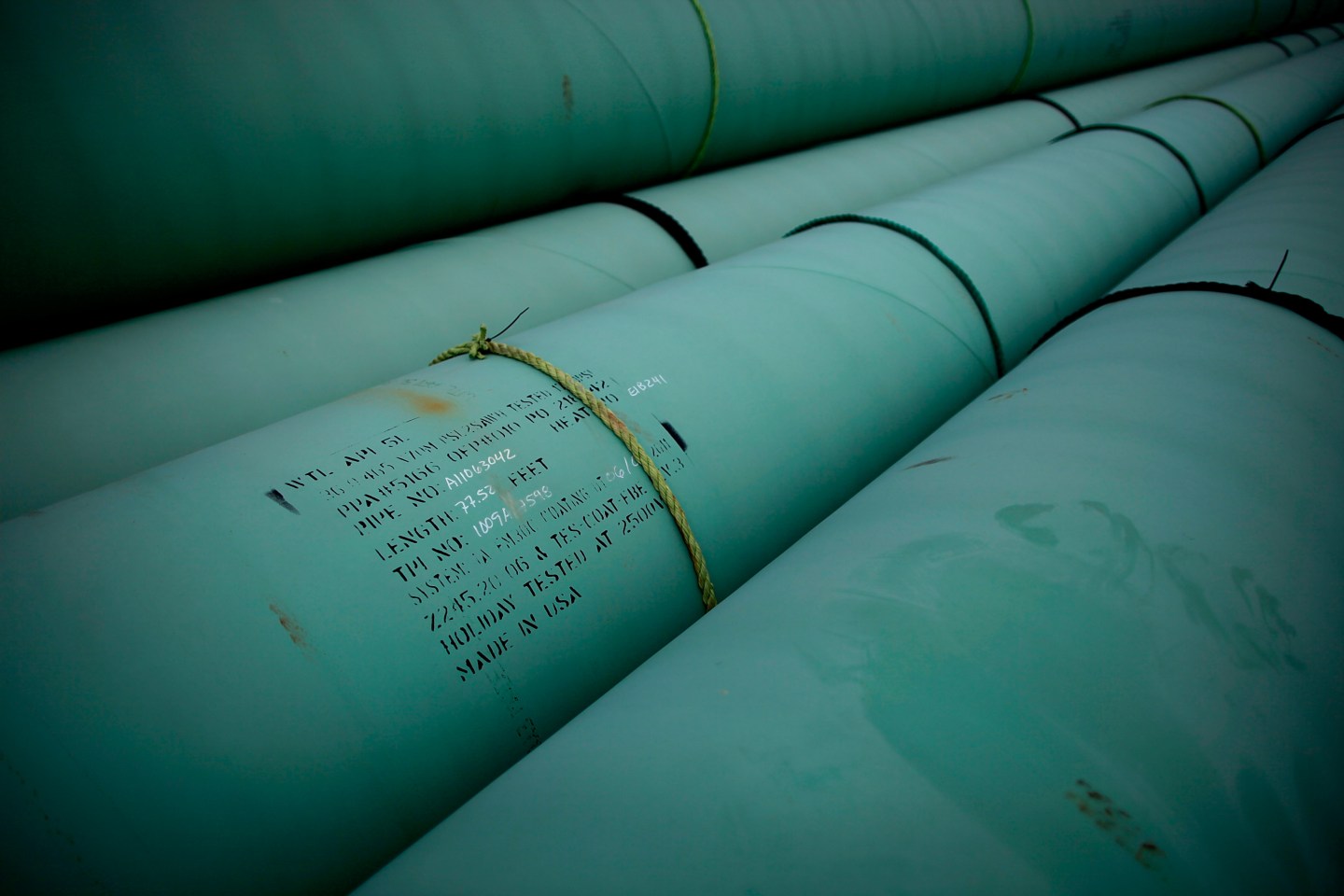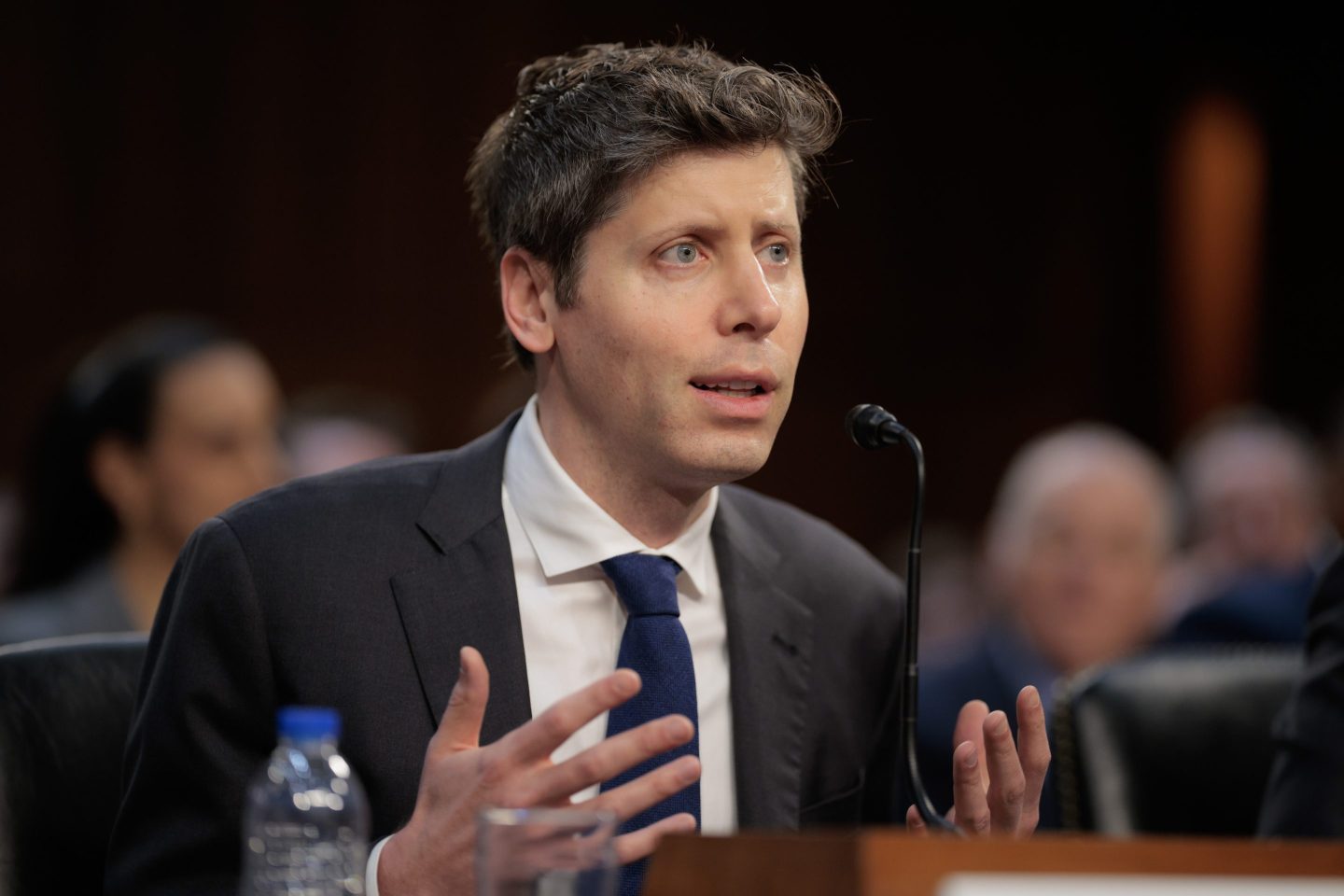President Obama’s veto hasn’t killed the Keystone XL Pipeline.
Given the pipeline’s importance to Canada and U.S. oil producers over the long term, it really isn’t a question of if but when this pipeline will be built. But weak oil prices have given the White House political cover to drag the debate out, allowing it to use the pipeline as a bargaining chip in its negotiations with the new Republican-controlled Congress.
So, how long will the pipeline be kept in limbo? It all depends on where oil prices go from here. If they remain depressed, as they are now, Republicans will need to do some logrolling with the White House if they want approval within the next two years. But if oil prices spike and the public starts fuming at the pump, the White House may be forced to hold its nose and sign off on the deal more quickly than it would have hoped.
Believe it or not, it has been 10 years since TransCanada first proposed building the $12 billion Keystone Pipeline system. It was designed to deliver crude from Canada’s western oil fields down to U.S. refineries in the Midwest and Gulf Coast. While the project was important for Canada and its oil industry, it was hardly noticed in the U.S. Opposition from environmentalists was almost nil, as pipelines, even big ones like Keystone, were ubiquitous, safe, and heavily regulated.
Permitting and construction of the pipeline followed a normal course. The first phase of the project focused on construction of the main Keystone pipeline. It was a big one, 30-inches wide and 2147-miles long. Its route would take it through three Canadian Provinces and nine U.S. states, terminating down in southern Illinois. The pipeline would need regulatory approval from dozens of local and federal agencies, including a presidential permit from the U.S. State Department, as it crossed an international border.
Despite all the red tape, TransCanada completed the permitting process in just three years. By 2010, the pipeline was complete, pumping thousands of barrels of Canadian crude down to the U.S. It didn’t create thousands of construction jobs nor did it cause an environmental catastrophe. It was just another pipeline moving crude around the U.S.—nothing more, nothing less.
That same year, TransCanada decided to build another leg of the Keystone Pipeline, this time called the Keystone XL Pipeline. It would be shorter than the first Keystone Pipeline, at just 1,176 miles long and crossing two Canadian provinces and three U.S. states. Canadian crude production was expected to ramp up quickly in the next few years. If the pipeline wasn’t built, crude would begin to back up in Alberta, where it could be trapped, bringing big losses to the energy industry and to Canada.
While it would still need many permits, including that presidential permit, all things being equal, the XL should have been green-lit faster than its bigger brother. But, somehow, the XL became a proxy battle in the increasingly mean spirited political war in Washington between Democrats and Republicans. Suddenly, lawmakers from states nowhere near the construction zone, such as California, Massachusetts, Alabama, and Louisiana, were holding up the pipeline like it was either some sort of environmental catastrophe in the making or a critical job-creating juggernaut that would lower gasoline prices for all Americans.
The amount of time, energy, and money spent over the last five years in pushing for and against this project baffles the mind. It is just a pipeline. While it is important to get Canadian crude to market, it won’t create millions of jobs nor will it open a new hole in the ozone layer. The State Department’s environmental review of the XL released last year confirmed as much when it noted that the project was environmentally sound, especially after TransCanada rerouted the pipeline to avoid the Ogallala aquifer in Nebraska, which is a major source of drinking water for nearly two million people.
So, where do we go from here? The Canadian Natural Resource Ministry and TransCanada say they will continue fighting for the pipeline. Oil sands production in western Canada is expected to nearly double by 2020 to 3.7 million barrels a day. By 2030, it’s expected to hit 5.2 million barrels a day. That extra crude needs to move to the market, and that will be nearly impossible if the XL isn’t built. Sure, Canada is exploring pipeline alternatives to the XL that wouldn’t require approval from the U.S. government. But even if they are all built, which is a long shot at best, it is difficult to see how they will be able to move all that crude without help from the XL.
The Northern Gateway Pipeline, which would export crude to Canada’s Pacific coast, is slated to move 500,000 barrels a day, while the newly proposed Energy East pipeline, which would transport crude to Canada’s Atlantic coast, would move an extra 1.1 million barrels a day. Add that to Enbridge’s plan to expand its existing Line 3 crude pipeline by an extra 310,000 barrels a day, and you get a total of 1.9 million barrels a day of extra takeaway capacity coming out of Alberta. While that’s a large amount of oil, it is only 60% of what will be needed to meet expected crude output levels by 2030.
While some of the gap may be filled shipping the extra crude by rail, which is far more dangerous than shipping via pipeline, it is still likely to fall short. As such, the XL’s 830,000 barrel-a-day capacity looks to be key to solving Canada’s energy puzzle, making it very difficult to envision it not getting built at some point in the next 15 years or so.
At this point, the Keystone XL Pipeline’s fate depends on where oil prices go from here. The 60% slump in crude prices from last summer has taken the “urgency factor” away from the pro-pipeline camp, giving the Obama Administration more time to drag its feet on the issue. Crude production in the U.S. has stalled, so it is difficult for the Republicans to demonize the White House for its refusal to sign off on a pipeline that would deliver more foreign crude into the U.S. And low crude prices have pushed gasoline prices down to levels not seen in years, knocking energy security off the top of voters’ list of concerns.
It looks like the Obama Administration has the upper hand here, at least for the moment. It is unlikely to sign off on the XL, or anything else the Republicans want, if they feel bullied. So, the Republicans need to consider how important this issue is to them and if they are willing to make some compromises on other issues. Is it worth trading the XL for immigration reform or for promising to leave Obamacare alone? How about corporate tax reform, something that both sides actually agree on? Republican leaders say they may attach the XL to a critical spending bill to force the president’s hand, but that could backfire on them if it ends up shutting down the government. It is doubtful that leaders on either side of the aisle want a repeat of the sequester drama from a couple of years ago.
The tables could turn, though, but only if oil prices recover from recent lows. This will bring the “urgency factor” back into play. If the White House remains obstinate in the face of rising gas prices, it could reflect badly on Democrats going into the 2016 elections, especially in critical swing states like Ohio and Pennsylvania.
The last major structural hurdle in the XL debate is a State Department report on whether the pipeline is in the nation’s best interests. It is hard to envision any scenario in which they’d argue it isn’t. There is no truly substantive reason why either side should be keeping this pipeline in regulatory purgatory. Hopefully, both sides will agree is is no longer worth the headache, approve it, and move on to other truly contentious matters of state.












